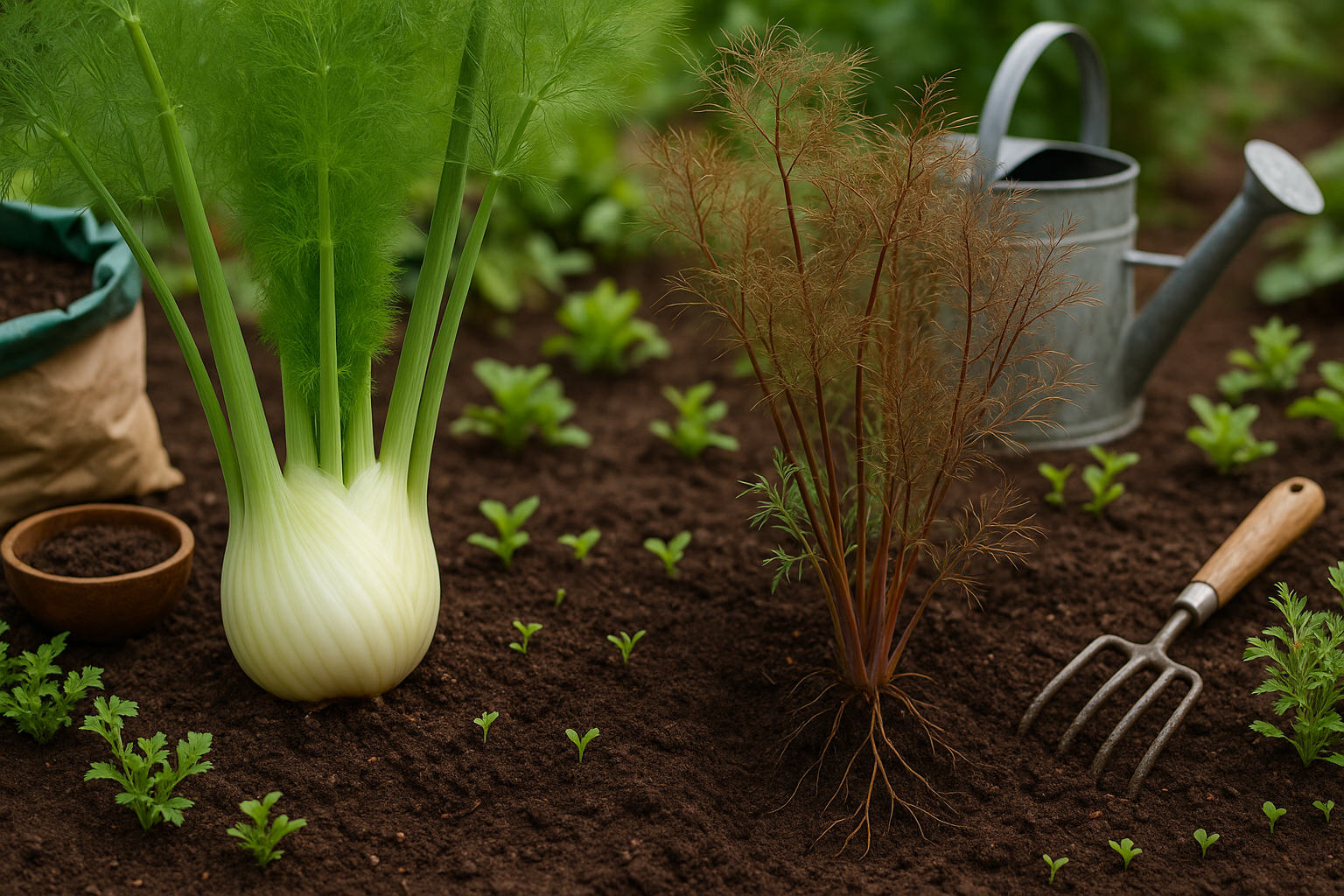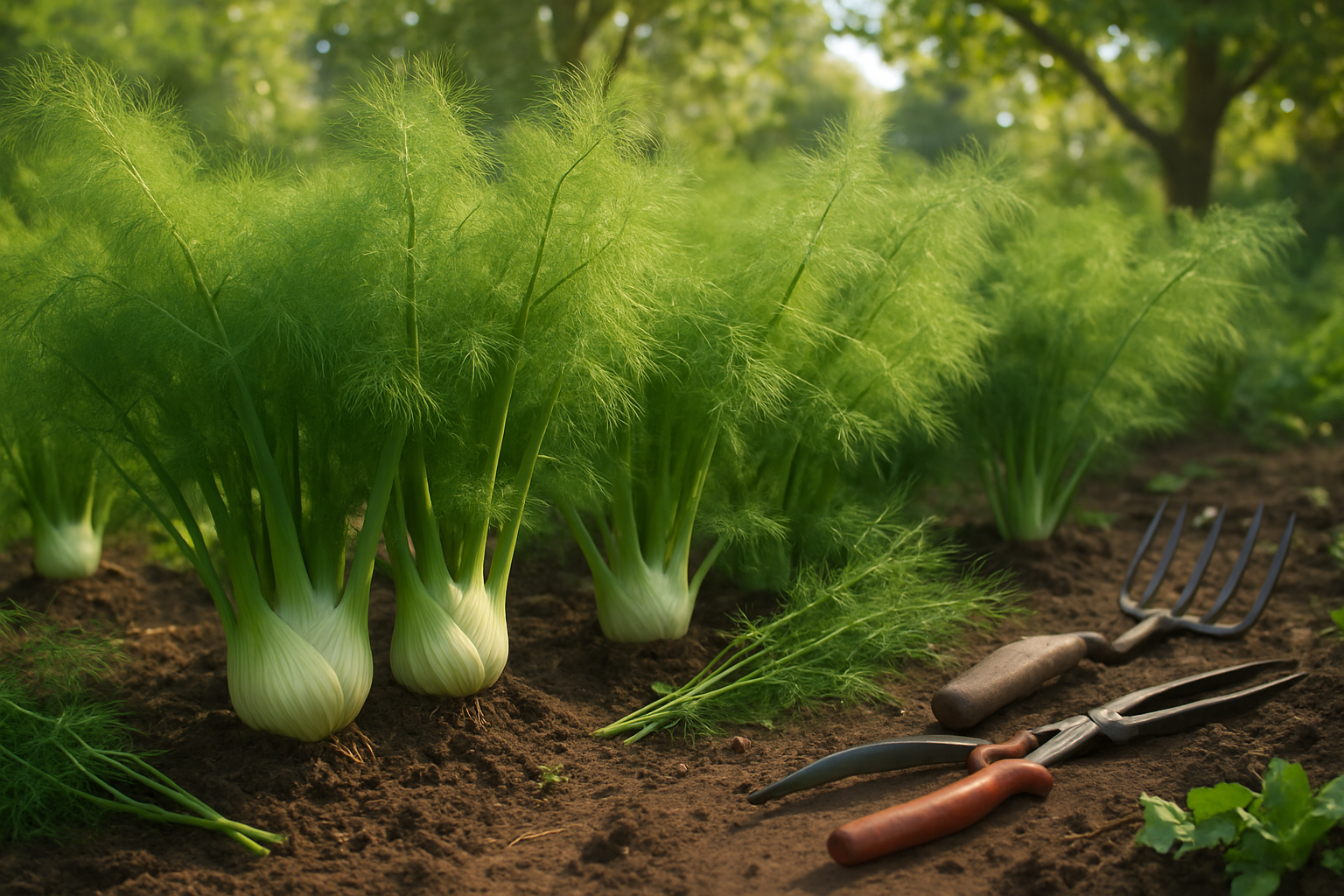Introduction
If you’re interested in pruning fennel, you’re probably aiming for those perfect, plump bulbs and feathery, fragrant fronds that make fennel a garden favorite. Fennel is a unique herb and vegetable, prized for its crisp, anise-flavored bulbs and delicate green leaves—known as fronds—that add a special touch to salads and seafood dishes.
But did you know that when and how you prune fennel can make a huge difference in both the size of its bulbs and the fullness of its fronds? Pruning isn’t just about keeping your plant tidy; it’s the secret to bigger, tastier harvests.
In this blog post, you’ll discover easy, beginner-friendly pruning techniques, the best times to snip for maximum growth, and practical solutions to common fennel pruning problems. Get ready to unlock the full potential of your fennel patch with a few quick, smart cuts.
Choosing the Right Fennel & Preparing Your Plants

When selecting fennel for your garden, it’s important to know the difference between bulb fennel (Florence fennel) and herb fennel (often called bronze fennel). Bulb fennel is grown for its crisp, sweet bulb—the part you’ll want for cooking—while herb fennel is prized for its feathery foliage and seeds.
Of the two, herb fennel benefits most from regular pruning, which keeps it bushy and prevents early flowering, while bulb fennel should only be pruned lightly so the bulbs develop well.
For the healthiest plants, choose a sunny location with rich, well-drained soil, and make sure you give your fennel plenty of room; spacing bulbs at least 12 inches apart helps air circulation, reducing disease and allowing easier pruning access. Before planting, enrich your soil with compost and consider loosening the surface with a garden fork to encourage deep root growth.
Water young plants consistently but avoid waterlogging, as fennel dislikes soggy roots. Early on, keep an eye out for weeds and gently remove them to prevent competition for nutrients. By setting up your fennel with excellent conditions and giving it some early attention, you’ll enjoy lush foliage for snipping or tender bulbs perfect for harvesting later.
Timing Your Pruning for Maximum Yield
Pruning fennel at the right times is key to encouraging fuller bulbs and bushy fronds, helping you maximize your harvest. Start by watching your seedlings—once they reach about 6 inches tall and have a few sets of true leaves, it’s time for the first light prune. Snip the growing tips just above a leaf node to promote branching and thicker foliage.
As your fennel matures, pay attention to the weather. In cooler climates, prune fronds in mid to late spring when growth is strong. In warmer areas, aim for early spring or late winter, before heat stress takes hold. Avoid heavy pruning once bulb formation begins—that’s usually when the plant base swells and fronds start arching upward—since this can stunt development. Instead, thin out only damaged or overcrowded fronds to improve sunlight and airflow.
Before your fennel starts flowering, check carefully for tiny yellow buds. If you spot them, prune off flowering stems unless you’re saving seeds, because blooming redirects energy away from bulb growth. Regularly harvesting fronds throughout the season not only encourages continual growth but also helps prevent the plant from bolting too soon.
Healthy fennel plants should look sturdy, with strong, fragrant fronds and a noticeable bulge at the stem base—the clearest sign your pruning timing is just right.
How to Prune Fennel for Bigger Bulbs

Pruning fennel properly is the secret to growing those big, crisp bulbs that make your harvest so satisfying. Start by inspecting your fennel plants and removing any small side shoots near the base, as these sap energy from bulb development. Snip them off gently using clean, sharp garden scissors—aim for a quick, confident cut close to the main stem so you don’t tear the plant’s tissue.
Next, trim away lower fronds that look yellowed or damaged, taking care not to remove too many at once—these fronds are still working to feed the bulb through photosynthesis. The most important step is to eliminate any flower stalks as soon as you see them forming. Flowering, known as bolting, will redirect the plant’s energy away from the bulb and into seed production, often leading to tough, undersized bulbs. Simply pinch or snip flower stalks off at their base to ensure energy stays focused on swelling the bulb.
Always handle the bulb itself gently to avoid bruising or damaging the tender layers beneath the surface. One common mistake is cutting away too many fronds or making ragged cuts, which can stress the plant and slow down growth—so prune gradually and always use sharp tools. Avoid leaving stubs that could rot and invite disease.
Another frequent misstep is waiting too long to remove flower stalks: the earlier you catch them, the better your bulbs will be. With a little patience and careful pruning, you’ll set yourself up for a fennel crop that’s plump, flavorful, and perfect for your kitchen.
Pruning for Lush, Tender Fronds
Pruning your edible fern for lush, tender fronds is easier than you might think—and it’s key to keeping your plant healthy and productive. Start by using clean, sharp scissors or garden shears. For light harvesting, simply snip off a few of the outermost mature fronds near the base. Leave the younger, central fronds untouched; these are the plant’s growth engine.
Light, frequent snipping—just a handful every week or two—not only provides a steady supply of the most tender shoots but also encourages your fern to branch out and become bushier. For heavier pruning, especially if your plant looks crowded or the old fronds are yellowing, cut back up to a third of the entire plant. Focus on removing the oldest and least vigorous growth to help redirect the plant’s energy toward producing fresh, vibrant fronds.
No matter how much you trim, always avoid cutting too close to the crown where new growth emerges. Damaging this area can slow regrowth or even harm the plant. By balancing gentle, regular harvesting with occasional deeper trims, you’ll enjoy a thriving fern that produces tender, flavorful fronds all season long.
Managing Overgrowth and Common Pruning Problems
If your fennel plant is getting leggy, crowded, or a bit too wild, don’t hesitate to cut it back hard. Use sharp, clean shears to trim stems down to about 6 inches above the soil. For overgrown beds, thin out weaker stems, leaving plenty of space—about 12 to 18 inches—between plants to improve airflow and reduce pest problems.
Bolting, or early flowering, often happens in hot weather. Snip off flower stalks as soon as they appear to encourage bushier growth and delay seed-setting. Always sterilize your tools between cuts to prevent spreading fungal diseases or pests, especially if you see black spots or wilted foliage.
If your fennel looks weak or stunted after pruning, ease up on watering for a few days and ensure the soil drains well—too much moisture can stress the roots. With regular light pruning and careful pest monitoring, even unruly fennel can thrive.
Harvest Tips & Beyond
Harvesting fennel at the right time ensures the best flavor and texture—aim to cut the bulbs when they’re about the size of a tennis ball and feel firm, usually around 90 days after planting. Snip fronds regularly with clean scissors for use in salads or as garnish, but always leave a few inches so the plant keeps producing.
When harvesting bulbs, use a sharp knife to cut just above the soil line, leaving the roots and base intact. With adequate watering, the plant may send up new shoots for a second harvest.
To maintain health and fend off pests like aphids, remove any yellowing leaves and keep the bed weed-free. If seed saving interests you, let a few plants flower and dry on the stem before collecting seeds.
For more in-depth guidance, check out your local extension office’s resources or join an online community of fennel enthusiasts for ongoing advice and inspiration.
